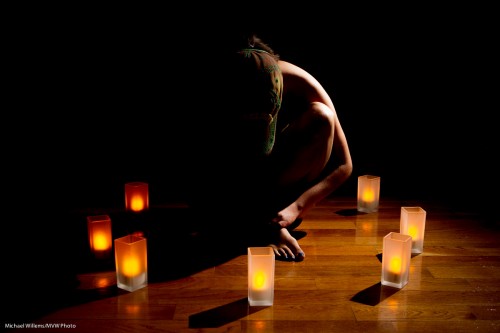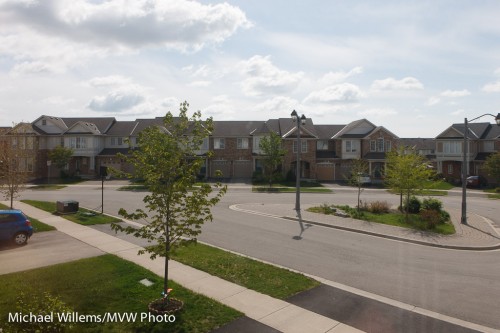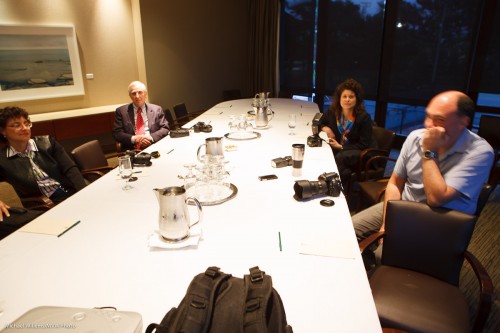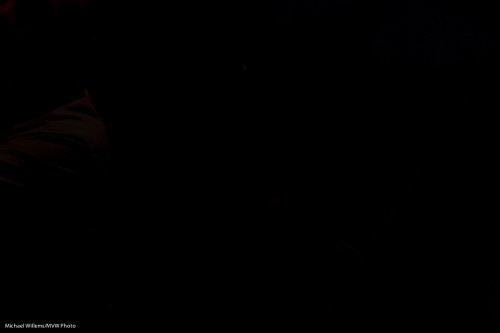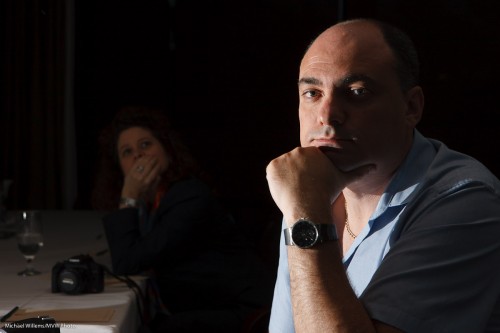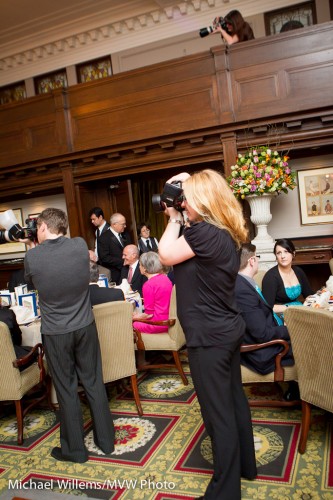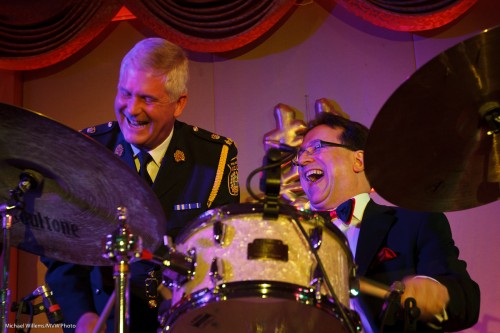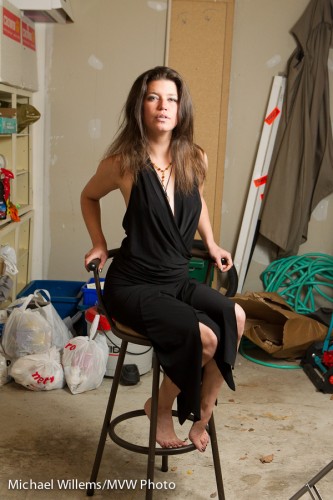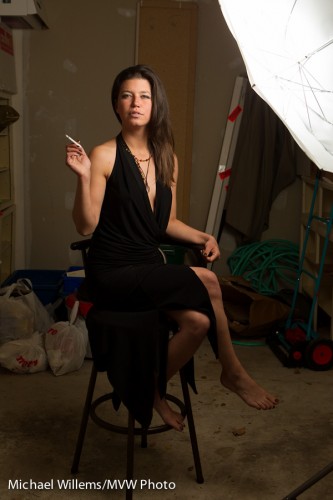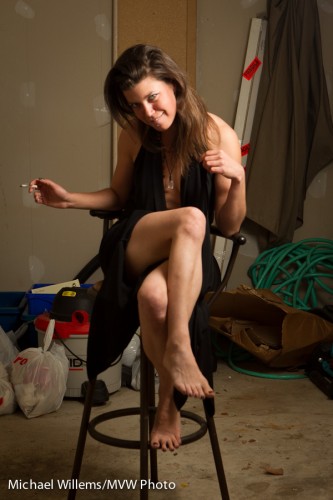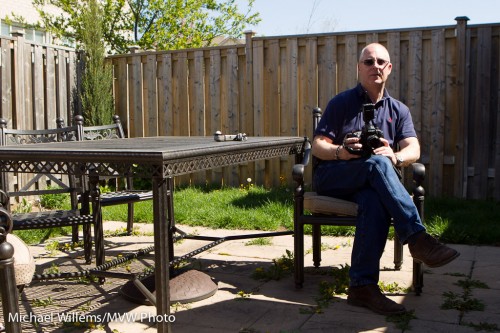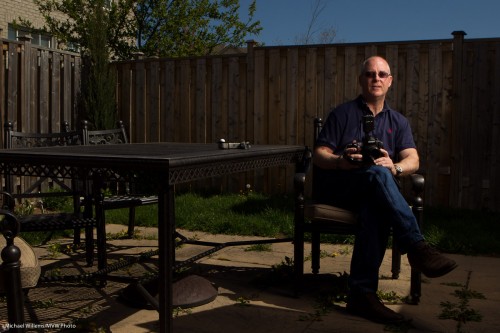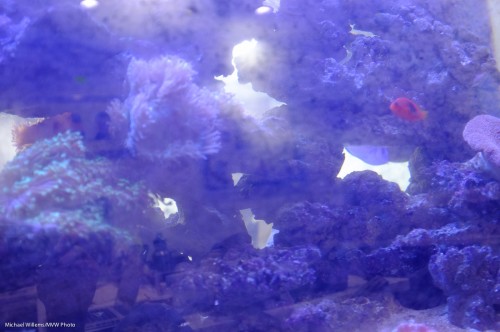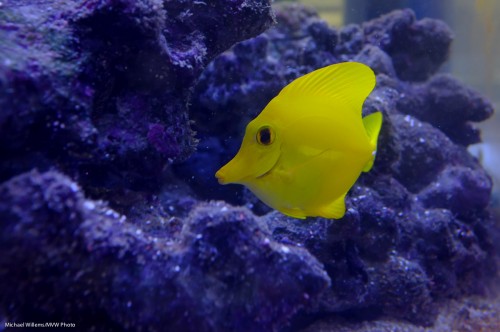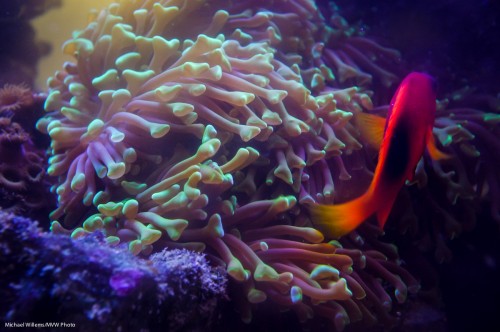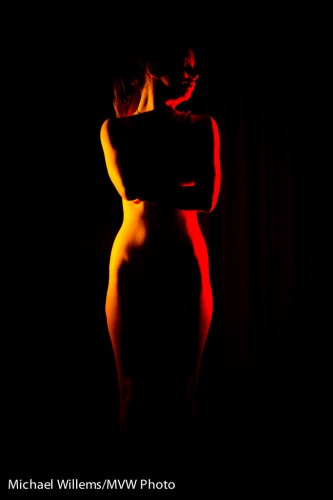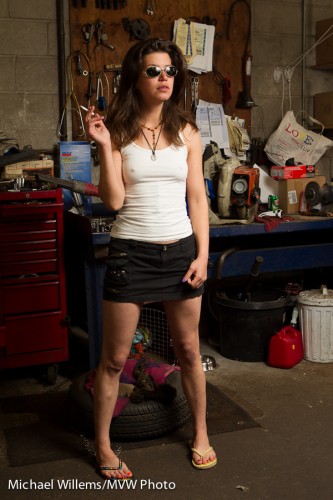Here’s my Picture of the Day, taken last night:
For a picture like this, what are the challenges?
First and foremost: to get the exposure right for the candles, while still keeping the room dark. The usual “flash only” setting of 100 ISO, 1/125th sec, f/5.6 will not work: the candles would be dark. Too wide open, and the entire room would be bright. You have the find the right “in between” setting: in my case, 1/30th sec at f/5.6, 400 ISO. Room lights were dimmed slightly, to avoid dark areas from becoming light.
Second, to avoid flash hitting the entire room. I fitted the single flash, an off-camera 580EX, with a Honlphoto 1/4″ grid. This lit up the side of the model, and the centre of the floor, only. (You can work out where the flash is by seeing where the shadows converge.)
Third, to aim the flash correctly. This is of course a matter of taste: I like side lighting to emphasize round shapes (the arm, leg, and toes in this picture).
Finally, to get the flash to the right level of brightness. I used TTL with flash compensation, though normally I would have used manual flash power setting for a creative flash shot like this.
Try a shot like this, if you are up to the challenge!

